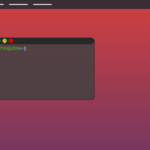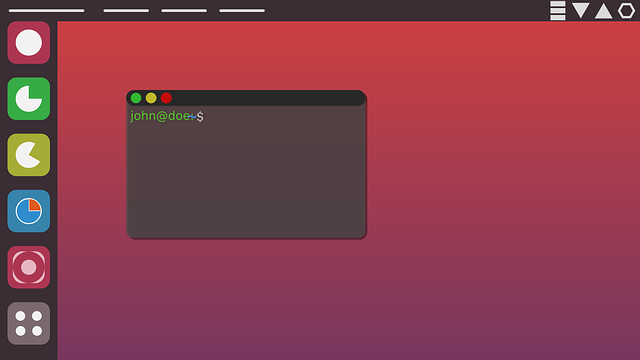The article underscores the critical roles of adaptability and security in modern financial transactions, particularly in payment processing on Linux systems. It advocates for a modular design approach in Linux-based payment solutions, which is pivotal for creating flexible, scalable, and versatile systems that can easily integrate with a variety of payment gateways and processors, including new forms like cryptocurrencies and mobile wallets. This modularity ensures that Linux remains an effective platform for payment processing, offering businesses the ability to provide a broad range of payment options without the need for extensive system reworks. It also enhances security and compliance with industry standards such as PCI DSS, simplifying auditing and vulnerability management. Consequently, Linux-based payment processing systems deliver a secure transaction environment that is both compliant and adaptable to the changing demands of the global payments landscape. In essence, for e-commerce entities seeking a robust, agile, and secure platform for payment processing, Linux with its modular design stands out as an optimal choice.
Embark on a journey into the world of tailored payment processing solutions with Linux at the helm. Modular design emerges as a pivotal approach, offering unparalleled flexibility and scalability to meet diverse business needs. This article demystifies the components that compose a robust modular payment system within Linux environments and guides you through customizing your setup to fit your specific requirements. Delve into “Leveraging Modular Design for Flexible Payment Processing on Linux Systems” to harness the full potential of Linux in streamlining your financial transactions with ease. Understanding and implementing these principles will set your payment processing infrastructure apart, ensuring it adapts seamlessly to your growing business demands.
- Leveraging Modular Design for Flexible Payment Processing on Linux Systems
- Understanding the Components of a Modular Payment System in Linux Environments
- Customizing and Scaling Your Payment Processing Solution with Linux's Modular Architecture
Leveraging Modular Design for Flexible Payment Processing on Linux Systems

In the realm of financial transactions, adaptability and security are paramount. Modular design has become a cornerstone in achieving these goals within Linux systems, particularly in the context of payment processing. By adopting a modular approach, developers can create components that interact seamlessly, allowing for a highly flexible and scalable payment processing system. This architecture enables Linux systems to integrate with various payment gateways and processors, ensuring compatibility with an evolving ecosystem of financial services. The modular nature of these solutions means that as new payment methods emerge—be it cryptocurrencies or mobile wallets—the system can readily incorporate them without significant overhauls. This adaptability is crucial in maintaining competitive edge and user satisfaction by providing a wide array of payment options, all within the secure and robust environment that Linux systems offer.
Furthermore, modular design in payment processing on Linux enhances security and compliance with industry standards. With discrete modules handling different aspects of the transaction process, vulnerabilities can be contained and mitigated more effectively. Each module can be audited independently, ensuring adherence to Payment Card Industry Data Security Standard (PCI DSS) requirements or other relevant regulations. This approach not only safeguards sensitive financial data but also facilitates smoother updates and maintenance cycles. As a result, businesses leveraging modular design for payment processing on Linux can offer their customers a secure, compliant, and user-friendly transaction experience that keeps pace with the rapid changes in the global payments landscape.
Understanding the Components of a Modular Payment System in Linux Environments

In the realm of secure and versatile payment processing, Linux environments present a robust foundation for managing transactions with modular design. A modular payment system in Linux is constructed with individual components that interact seamlessly, offering scalability and ease of customization. These modules encompass various functionalities such as transaction handling, data encryption, payment gateway integration, and user authentication. The modular nature allows developers to replace or upgrade specific parts without disrupting the entire system, ensuring that businesses can swiftly adapt to evolving payment standards and security requirements. For instance, when a new cryptographic algorithm becomes necessary for enhanced security, the relevant module can be updated independently of the other system components. This approach not only streamlines maintenance but also enhances performance and reliability in handling financial transactions.
When delving into the specifics, it’s evident that Linux’s inherent security features and open-source ecosystem foster an ideal environment for payment processing systems. Components like Yubico PIV (Smart Card) authentication or OpenSSL for cryptographic functions are often integrated within these systems. The modularity also facilitates compatibility with a wide range of hardware, from traditional credit card readers to advanced biometric devices. As such, organizations can customize their payment processing workflows to include the most secure and up-to-date methods available, all while leveraging the stability and security that Linux provides. This level of flexibility and control is paramount for businesses operating in an increasingly digital economy where customer trust and transactional integrity are non-negotiable.
Customizing and Scaling Your Payment Processing Solution with Linux's Modular Architecture

In the realm of e-commerce and online transactions, maintaining a robust and flexible payment processing system is paramount. Linux’s modular architecture offers an ideal foundation for this purpose, providing developers with the agility to customize and scale their payment processing solutions to meet evolving business needs. The modular nature of Linux allows for individual components of the payment stack—such as cryptographic modules, gateway interfaces, and data validation layers—to be independently managed, updated, or replaced without disrupting the entire system. This modularity ensures that payment processing applications running on Linux can handle a wide array of transaction types, currencies, and security protocols, all while maintaining high performance and reliability.
Furthermore, as businesses grow, their payment processing requirements become more complex. With Linux’s modular design, it’s straightforward to add new modules for additional payment methods or enhanced fraud detection mechanisms. This scalability is crucial for businesses operating in multiple regions with diverse payment infrastructures. By leveraging the open-source ecosystem and Linux’s extensible architecture, developers can integrate cutting-edge payment processing technologies, such as advanced encryption standards and tokenization, to protect sensitive financial data and streamline transaction flows. This not only improves the security posture of the payment system but also enhances the user experience by providing a seamless and secure checkout process.
In conclusion, embracing modular design within Linux systems offers a robust and scalable approach to payment processing. By dissecting the intricacies of a modular payment system and the components that underpin it in Linux environments, businesses can tailor their payment processing solutions to meet diverse needs effectively. The flexibility afforded by Linux’s modular architecture is unparalleled, enabling seamless customization and adaptation to future requirements or regulatory changes. For entities looking to streamline operations, ensure security compliance, and enhance customer satisfaction through a reliable and efficient payment system, modular design within the Linux framework stands out as a prudent choice. Payment Processing with Linux thus emerges not just as a technical solution but as a strategic advantage in the evolving landscape of financial transactions.


























